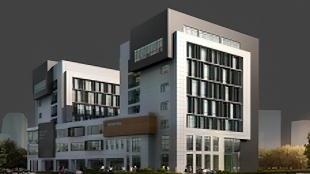您需要 登录 才可以下载或查看,没有账号?注册

x
本帖最后由 七月纪旅。 于 2022-8-10 16:13 编辑

Introduction
Hello everyone! My name is Fadi Azar, and I’m a self-taught 3d Artist with a main focus on Hard-Surface and Props. Currently working for Experiment 101 in Stockholm, Sweden.
I love everything related to 3D and making games, and I’m trying in each project to develop myself in a certain aspect to achieve good-looking assets.
介绍
大家好!我的名字是Fadi Azar,我是一名自学成才的3D艺术家,主要关注硬表面和道具。目前在瑞典斯德哥尔摩的实验101工作。
我喜欢与3D和制作游戏相关的一切,我在每个项目中都试图在某个方面发展自己,以实现好看的资产。

Goals
My main goal in this project is to make a mix between hard surfaces and props at the same time to showcase my ability with handling those two things together.
目标
我在这个项目中的主要目标是同时在坚硬的表面和道具之间进行混合,以展示我同时处理这两件事的能力。
Software
I started learning Blender last year and now it’s my main tool for the modelling pipeline and Uv Mapping. I used Substance painter for baking and texturing and Marmoset for rendering and I arranged my references in PureRef.
软件
我去年开始学习Blender,现在它是我建模管道和Uv Mapping的主要工具。我使用Substance painter进行烘焙和纹理处理,使用Marmoset进行渲染,并在PureRef中排列了我的引用。
References/Inspiration
Finding references for this project wasn’t that easy, I spent quite a lot of time searching for references and videos for the motorcycle to understand how the shapes were constructed from all the angels.
参考/灵感
为这个项目找到参考资料并不容易,我花了很多时间搜索摩托车的参考资料和视频,以了解这些形状是如何从所有天使中构造的。
Modelling
After collecting all my references I started blocking out the shapes using primitive objects and very basic shapes just to get an idea about the overall look and use them as a starting point for detailing the mesh.
造型
在收集了所有参考资料后,我开始使用原始对象和非常基本的形状来阻挡形状,只是为了了解整体外观,并将它们用作详细设计网格的起点。
I usually used to use ZBrush to make the high poly mesh by using the Dynamesh workflow, but in this project, I tried to use only Blender for the whole pipeline, so the high polys are a mix between SubD and remeshing workflow( A bit similar to Dynamesh workflow in ZBrush).
我通常使用ZBrush通过使用Dynamesh工作流程来制作高多边形网格,但是在这个项目中,我试图在整个管道中仅使用Blender,因此高多边形是SubD和remeshing工作流之间的混合(有点类似于ZBrush中的Dynamesh工作流)。
I will explain how I approach the remeshing workflow to one of the objects that I used in this project.
我将解释如何将网格重构工作流处理到我在此项目中使用的对象之一。
1. First I selected the sharpened edges ( If this option does not give the desired result of selecting a specific edge so you should select it manually).
首先,我选择了锐化的边缘(如果此选项没有给出选择特定边缘的预期结果,那么您应该手动选择它)。
2. The next step is to crease the selected edges so that we can use the subdivision modifier to get a clean look around the cylinders.
2.下一步是折痕所选边缘,以便我们可以使用细分修饰符来干净地查看圆柱体周围。
3. The scaling of the object is very important when it comes to using the remesh modifier so make sure that you applied the (rotation and the scale) of the selected object.
3.在使用remesh修饰符时,对象的缩放非常重要,因此请确保应用了所选对象的(旋转和缩放)。
4. Choose the Voxel option inside the remesh modifier and decrease the Voxel Size value (lower value means dense mesh so be careful when you decrease it) and don’t forget to enable the Smooth Shading option.
4. 在 remesh 修饰符中选择“体素”选项,然后减小“体素大小”值(较低的值表示网格密度,因此在减小网格时要小心),并且不要忘记启用“平滑着色”选项。
5. Then I added a Corrective Smooth modifier, I enabled Only Smooth and then I increased the Repeat option to polish the edges and get a smoother mesh, value between (25 and 50) works fine.
然后我添加了一个纠正平滑修改器,我启用了 仅平滑 然后我增加了 重复 选项来抛光边缘并获得更平滑的网格,(25和50)之间的值工作正常。
6. I then added the Decimate modifier and chose the Collapse option and I decreased the Ratio value between (0.1 and 0.2) which should work fine.
然后,我添加了Depimate修饰符并选择 折叠 选项,我降低了(0.1和0.2)之间的比率值,这应该可以正常工作。
Tip: This workflow could slow your viewport in Blender when you use it for multiple objects, so be careful when using it.
提示: 当您将其用于多个对象时,此工作流程可能会减慢Blender中的视口,因此在使用它时要小心。
And for the tires here is a breakdown of how I approached them.
对于轮胎,这里是我如何处理它们的细分。
For the cloth, I used the Simply Cloth pro-Addon, so basically, I modelled a rough mesh then selected the boundary edges and I pin them and then I hit the play bottom. After that, I adjusted the mesh manually by enabling Proportional Edit. This function will let me transform selected vertices while having that transformation affect other nearby elements within a specific range.
对于布料,我使用了Simply Cloth pro-Addon,所以基本上,我模拟了一个粗糙的网格,然后选择边界边缘,我将它们固定下来,然后我击中了游戏底部。之后,我通过启用比例编辑手动调整网格。此函数将允许我变换选定的顶点,同时让该变换影响特定范围内的其他邻近元素。
For the gun, the GasCan and the shovel I used the same modelling workflow for the high polys which was subD and remeshing.
对于喷枪,GasCan和铲子,我对高多边形使用相同的建模工作流程,即subD和重新划分网格。
For the Uv mapping, I usually use the Uv toolkit Addon. It has very useful functionality when it comes to straightening the UV islands that will help later to save a lot of Uv space when it comes to packing.
对于 Uv 映射,我通常使用 Uv 工具包 Addon。在拉直UV岛时,它具有非常有用的功能,这将有助于以后在包装时节省大量的Uv空间。
For packing the Uvs I used UvPackMaster, it gives a very decent result when I pack my Uvs. So for example, when I have a mirrored Uv Islands I usually enable Lock Overlapping which will preserve my mirrored islands whenever I repack my UVs. It’s very useful.
对于包装Uvs,我使用UvPackMaster,当我打包Uvs时,它给出了一个非常不错的结果。例如,当我有一个镜像的Uv Islands时,我通常会启用Lock Overlapping,每当我重新打包UV时,它都会保留我的镜像岛屿。这非常有用。
Texturing
Texturing is the most enjoyable part of the whole process.
纹理
纹理是整个过程中最令人愉快的部分。
I used Substance Painter for the baking and the texturing, but I usually do some simple setup before start texturing. I change the Color Profile to ACES_UE4_Log made by Bleleux and then I enable Tone Mapping and I change the Function to Log.
After that in the Shader Parameters, I change the quality of the Ao to High and I use Studio Tomoco for the Environment. Those simple steps will make the viewport in Painter to look a bit similar to Marmoset’s viewport.
我使用Substance Painter进行烘焙和纹理处理,但我通常在开始纹理之前进行一些简单的设置。我将颜色配置文件更改为Bleleux制作的ACES_UE4_Log,然后启用色调映射,并将功能更改为Log。
之后,在着色器参数中,我将Ao的质量更改为“高”,并使用 Studio Tomoco 进行环境处理。这些简单的步骤将使 Painter 中的视口看起来有点类似于 Marmoset 的视口。
I usually start texturing by layering the details one by one. I spend most of the time layering/Painting the details in the BaseColor/Roughness because, in my opinion, they are the most important maps in texturing.
我通常通过逐个分层细节来开始纹理化。我大部分时间都花在BaseColor/Roughness中分层/绘画细节,因为在我看来,它们是纹理中最重要的地图。
Rendering
For lighting, I used a bunch of point lights and a HDRI. I usually try to use different lighting scenarios to see how the mesh would look in different environments. For this project, I used a low contrast indoor HDRI from Polyhaven.
For the post effect, I set the Tone Mapping to ACES and I increased the contrast just a bit to give it more highlights, and for the rest of the post effects, I just adjusted randomly until I liked it (like the Sharpen and the Vignette).
渲染
对于照明,我使用了一堆点光源和 HDRI。我通常尝试使用不同的照明场景来查看网格在不同环境中的外观。对于这个项目,我使用了Polyhaven的低对比度室内HDRI。
对于后期效果,我将色调映射设置为ACES,并稍微增加了对比度以使其更具高光,对于其余的后期效果,我只是随机调整,直到我喜欢它(如锐化和晕影)。
I wanted to make the motor be more in contact with the ground so that is why I added the mud, it’s just a simple mesh that I made using Geometry Nodes following a tutorial by MaxEdge.
我想让电机与地面接触得更多,所以这就是我添加泥浆的原因,这只是我按照MaxEdge的教程使用Geomector Nodes制作的简单网格。
Conclusion
At the end of this article, I really hope that you find it useful. If you have any questions or you are wondering about something just DM me on Artstation, I’m always happy to help.
Big Thanks to Games Artist for this opportunity.
结论
在本文的最后,我真的希望你觉得它有用。如果您有任何疑问,或者您想知道在Artstation上DM我的事情,我总是很乐意为您提供帮助。
非常感谢Games Artist提供这个机会。
|







 评分
评分






